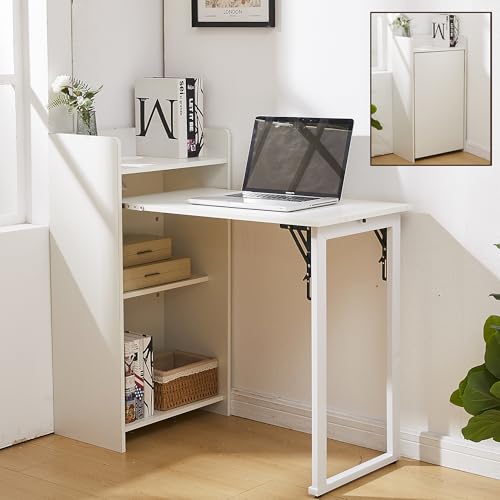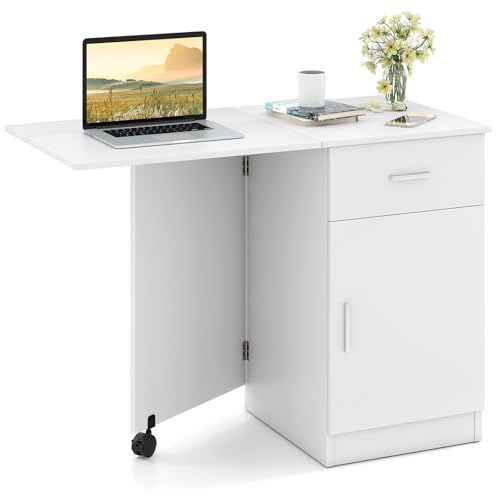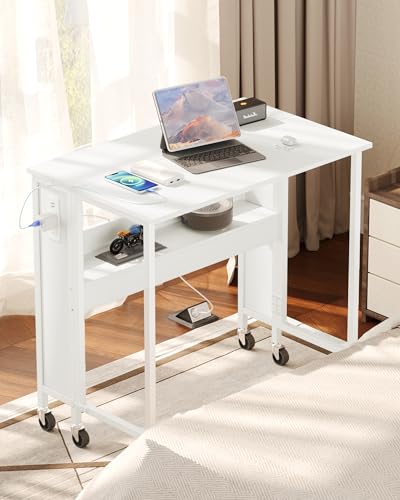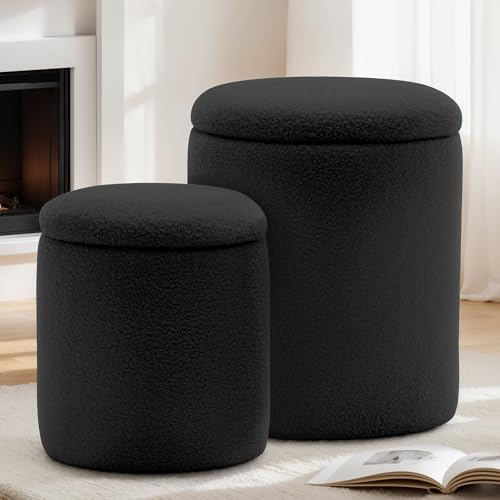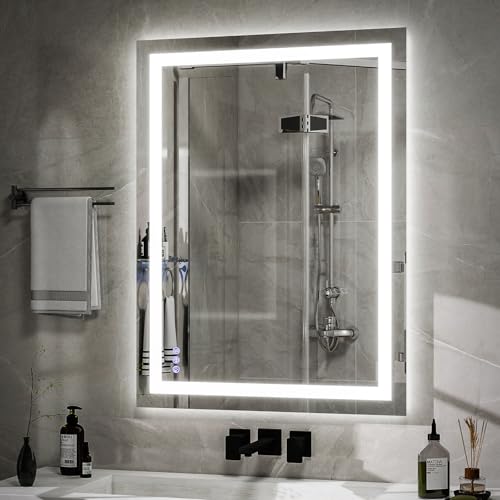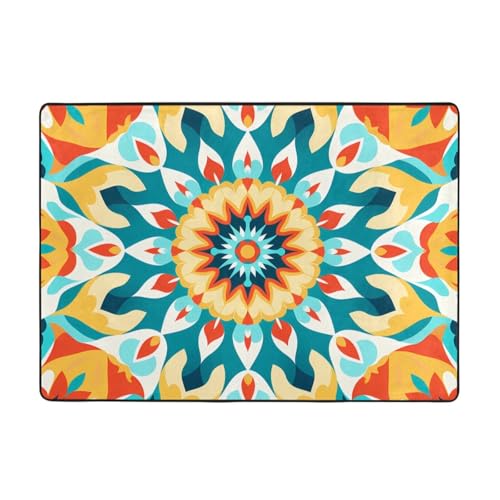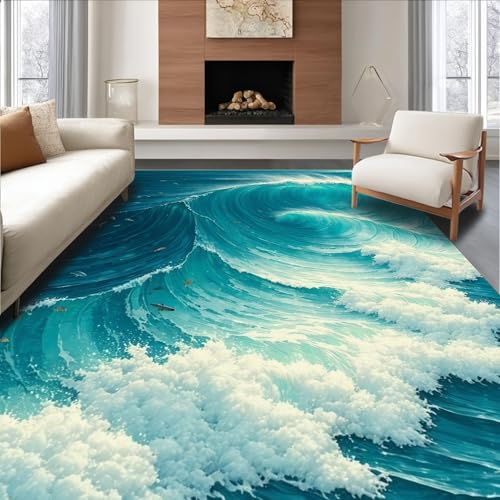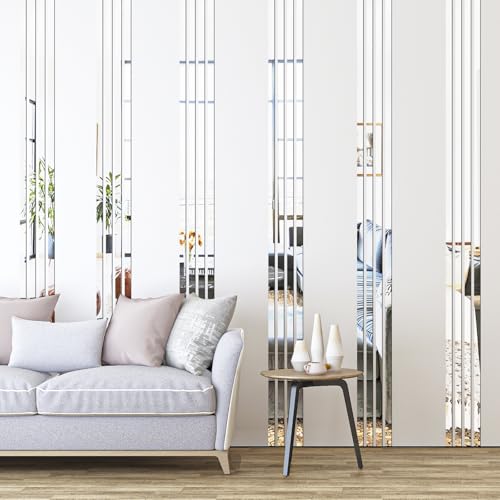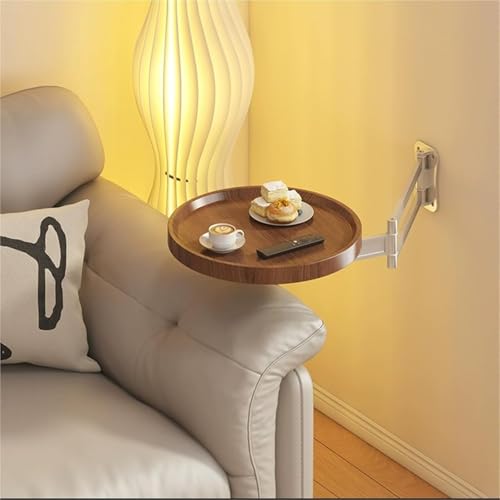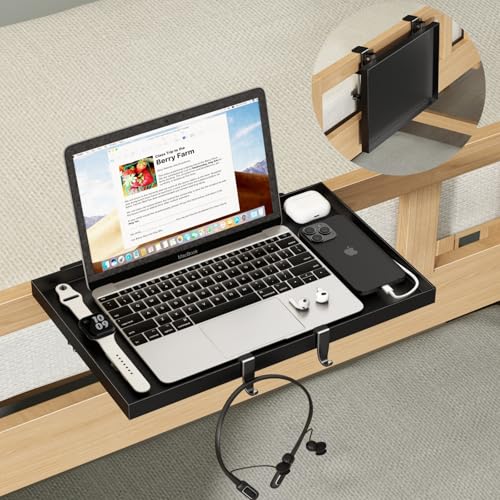Let’s discover small-space hacks 2025 that designers skip: tech, illusions, modular pieces & renter tricks. Make your tiny room feel twice the size.
This post contains affiliate links. That means I may earn a small commission if you purchase through my links—at no extra cost to you.
Why I Had to Rethink Every “Small-Space Hacks” I Thought I Knew

If you’ve ever typed “small space hacks” into Pinterest or TikTok, you’ve probably seen the same ten ideas recycled over and over again, like I’ve seen:you know, the ones that say: buy a mirror, use vertical shelves, go minimalist. Don’t get me wrong, those tips can help, but in 2025, many of them feel… outdated, at least this was my impression.
Our lives have shifted. We’re working from home more, collecting hobbies, hosting friends in tinier apartments, and yes even embracing a little bit of maximalism again. A perfectly empty “minimalist box” isn’t joyful or practical anymore.
So I started testing small space hacks that go beyond the basics, the type of tricks designers quietly use, illusions that genuinely expand a room, furniture that reconfigures with your lifestyle, and even tech tools that carve out space where you thought there was none.
This post is a litlle long (because I’m giving you all the details I wish I had sooner), but trust me, by the end, you’ll walk away with:
- Illusions that actually trick the eye into feeling more space.
- Products and tweaks that fit rental life and budget.
- Real experiments (what failed, what worked, and what made me say “why didn’t I try this sooner?”).
- Fresh 2025 updates — things even Pinterest hasn’t fully caught onto yet.
So grab your coffee and let’s talk about the space hacks that actually make tiny living feel big.
Why Traditional Small-Space Tips Are Failing in 2025

The Overused “Minimalism” Trap
Minimalism was the holy grail of small-space living for years. “Own less, display nothing, live in beige.” The problem? Life isn’t beige. Most of us actually own things, and stripping your home bare often makes it feel sterile instead of spacious.
What I’ve learned: it’s not about less stuff, it’s about smarter stuff. A bold rug, a layered gallery wall, or textured storage baskets can actually make a room feel more intentional and not smaller. Designers in 2025 are leaning toward “curated fullness” instead of blank walls, and honestly, it’s way more livable.
How Trends & Lifestyles Changed
Remote work changed everything, I know it did for me and many people around me. A desk in the corner of the bedroom. Workout gear squeezed under the couch. Hobbies spilling into the living room.
The old “just hide it all” advice doesn’t cut it today. Instead, small space hacks now focus on making multiple lives fit into one footprint. That’s where modular furniture, disguised storage, and illusion tricks really shine.
Illusion Tricks That Make Tiny Rooms Feel Bigger

Micro Mirrors & Reflective Corners
We’ve all heard this old trick in the book, to “use mirrors to make a room bigger,” but here’s the twist: instead of one giant mirror, scatter smaller reflective surfaces in corners.
I tried placing a round mirror above a shelf, mirrored coasters on a coffee table, and even a glossy tray by the sofa. Suddenly, light bounced in unexpected places, and the room felt alive instead of flat. Micro reflections trick your eye into thinking there’s depth where there isn’t.
Ceiling Paint Gradients That Stretch Height
This one blew my mind, so if you paint your ceiling a gradient (darker edges that fade into lighter center), it visually “lifts” the ceiling height. A designer friend swears by using paint leftover samples to DIY a subtle gradient and it cost me under $40, and my low 8-foot ceiling suddenly felt taller.
Hidden Window Extensions
Another decor weird hack? Fake moldings and trim that extend past your actual window frame. When you hang curtains wider and higher than your window, you create the illusion of a bigger window (and more light). It’s one of those things you don’t consciously notice, but it makes a huge difference in how open the room feels.
Tech Meets Tiny: Smart Gadgets That Create Space Out of Thin Air

We came to my personal favourite part, gadgets, and this is where small space hacks 2025 really get exciting, because tech is stepping in to solve problems furniture alone can’t.
- Projection TVs: Instead of a bulky TV stand, I mounted a tiny short-throw projector on a floating shelf. When it’s off, the wall is clear. Game changer.
- Foldable smart desks: Think Murphy bed, but for laptops. Some newer versions fold flush to the wall but hide charging docks inside. Perfect if you WFH.
- AR lamps: Yep, lighting tech is catching up. Some lamps now project patterns or ambient “windows” onto walls — instant faux daylight in windowless rooms.
These aren’t gimmicks. They genuinely free up square footage that old “multi-use ottomans” can’t.
Multipurpose Pieces You Won’t See in Pinterest Lists

Furniture with Concealed Flip Surfaces
I once bought a coffee table that flipped open into two small laptop desks. Best $200 I’ve spent. Suddenly, I had dining, laptop, and board game space — all in one footprint.
Modular Pieces That Reconfigure Daily
Brands are finally realizing small spaces need flexible furniture. Think ottomans that connect like puzzle pieces, or couches where the chaise switches sides in minutes. Being able to reconfigure daily is a luxury in a tiny space.
Hidden Drop-Down Walls
Hear me out: fold-out trays that attach to walls. They’re cheap, renter-safe (3M hooks + brackets), and suddenly your “blank wall” is a bar cart, extra counter, or craft station. Pinterest still hasn’t caught up with how genius this is.
Lighting & Tech Hacks for Compact Living
Lighting might be the most underrated small-space tool. In 2025, smart lighting is affordable and flexible.
- Warm vs. cool bulbs: A $10 bulb swap literally changed how big my studio felt. Warm light softens edges; cool light makes corners sharper. Play with both depending on your vibe.
- Toe-kick lighting: LED strips under cabinets or couches create “floating furniture” illusions. It makes the floor feel bigger than it is.
- Smart mirrors with built-in LEDs: These double as vanity lights and room expanders. Bonus: they bounce light around so you don’t need as many lamps.
Storage Illusions & Disguised Spaces
False Backs
Ever peek behind a media console? There’s always a few inches wasted. Adding false backs (or even pull-out panels) gives you hidden storage for cords, remotes, or seasonal stuff.
Vertical Cavity Storage
One designer hack I tested: sliding slim vertical racks (think 6 inches wide) between fridge and wall. Suddenly, I had a “pantry” in 6 inches of dead air.
Furniture That “Breathes”
Some new expandable tables and ottomans literally shrink and grow depending on what you need. A stool that pulls out into three stacked seats? Yes please.
If pastel vibes are totally your thing, you’ll love my post on Beautiful Pastel Apartment Decor Ideas That’s TikTok-Approved & Low-Cost. It’s full of friendly hacks that make your space feel dreamy without blowing your budget.
Textiles, Texture & Layout Tricks You Haven’t Tried

When you’re dealing with a small space, you quickly realize it’s not just about fitting furniture in. The vibe of the room, the way textures, patterns, and layouts play together all these can make a space feel expansive or claustrophobic. In 2025, designers are leaning into optical illusions, layered coziness, and smarter furniture placement to trick the eye while keeping things practical.
Trompe-l’oeil Rugs: Floor Magic That Adds Square Feet (Visually)
I discovered one of the most underrated small space hacks of 2025 and it is right under your feet. Trompe-l’oeil rugs (French for “deceive the eye”) use perspective patterns to create the illusion of depth. I tested one in my 9×12 living area — suddenly, it felt closer to a 12×15 room. The best part? They also serve as conversation starters.
And if you’re worried about bold designs, stick to neutral tones with subtle 3D patterns. Brands like nuLOOM and Rugs USA now carry renter-friendly, washable versions that don’t overwhelm your space.
Layered Textures: Clutter Disguised as Design
Here’s the truth: you probably own more than a minimalist Pinterest board would like. Instead of stressing about hiding every item, lean into layering. Think velvet pillows mixed with boucle throws, a linen slipcover, a wicker basket or two and suddenly, what could feel like “stuff everywhere” looks intentional and cozy.
I started layering textures after realizing my space looked flat in photos. Once I added a chunky knit throw and a cane side table, the room felt designed rather than “filled.” The trick? Keep the palette cohesive (3–4 colors max) so the variety feels curated, not chaotic.
Floating Pathways: Why Pulling Furniture Off the Wall Actually Works
It sounds backwards, but pushing every piece of furniture against the wall makes small rooms look tighter. Try floating your sofa a foot off the wall or angling your chair slightly inward. By leaving a “pathway” behind or around furniture, your brain reads the layout as more open.
I tested this in my 400 sq. ft. studio: instead of a cramped box, I suddenly had clear zones living, dining, and working, even though nothing physically changed. If you’re nervous about wasted inches, choose furniture with slim legs (Burrow’s mid-century couches are perfect for this). The air underneath tricks the eye into thinking you gained square footage.
Quick Small-Space Hacks You Can Try This Weekend

If you’re itching for results without a full redesign, these renter-friendly tricks they do the job done:
- Swap your bulbs → Warm bulbs soften edges; cool bulbs sharpen corners. Test both.
- Add peel-and-stick mirrored tiles → Place them in corners to bounce light and create depth.
- Raise your curtains → Mount them 6–8 inches above the window to fake taller ceilings.
- Fold-down tray shelf → A $30 Amazon bracket kit turned my blank wall into an extra desk.
- Budget projector → Even under $150, these save serious square footage over a TV.
Everyday Tools That Secretly Expand Your Space

Now, if you have not made your mind whether to change some furniture pieces, it’s ok, I get it, it can be confusing if it will work out or not, some of my favorite hacks aren’t even “furniture”, they’re tools that help you reclaim little corners you didn’t realize you had.
- Magnetic strips: I use them in the kitchen for knives, in the bathroom for bobby pins, even in the entryway for keys, and they work everywhere. Suddenly, drawers that were once cluttered feel usable again.
- Fold-out brackets: I found a set on Amazon for under $30 and turned a blank wall into a fold-down desk. Perfect for WFH days, then it disappears when I want my living room back.
- Smart LED kits: I underestimated these until I tried them under my cabinets. They don’t just add light — they change how your space feels. A soft amber glow in winter? Cozy. A crisp daylight white in summer? Fresh and airy. Mood-shifting magic for under $50.
To be honest, these are just a few of the things I personally tried, of course there are many other hacks out there.
Seasonal Small-Space Hacks: 2025 Edition

Here’s something no one tells you: a small room doesn’t feel the same in January as it does in July. The way you dress your space should change with the seasons, just like your wardrobe.
- Fall/Winter. When the cold months starts to hit, it can make tiny spaces feel claustrophobic, so instead of burying yourself in heavy blankets, go for thin fleece throws you can layer. They add warmth without bulk. Switch your bulbs to a golden amber tone (seriously, it’s like an instant fireplace glow), and anchor the room with one cozy rug that defines the space.
- Summer. Now when the heat comes, clutter becomes unbearable. I roll up my heavy rug and swap it for a flatwoven one, hang sheer curtains for airflow, and, this is a personal one, my favorite trick, remove one small piece of furniture. Even losing a side table made my living room feel breathable again. Little changes, but your brain (and body) notices.
Mistakes to Avoid With Small-Space Hacks

I for one learned most of these the hard way, so consider this your shortcut to avoid them.
- Doing too much at once. I once tried seven hacks in a weekend and ended up with a room that felt like a DIY lab, not a home. Pick two or three high-impact ideas and let them shine.
- Forgetting about weight. Those Murphy-style desks look dreamy on Instagram, but some weigh over 100 pounds. They can wreck walls — and your deposit. If you’re a renter, lighter fold-out brackets or floating shelves are your safer bet.
- Bad lighting choices. This one hurts because I ruined a wall of paint with the wrong bulbs. Saturated colors look muddy in dim light. Always test your paint swatches with your actual lamps before committing. Trust me, it saves heartbreak (and money).
FAQ: Small-Space Hacks 2025 You’re Probably Googling

What is the latest small-space hacks for 2025?
Designers are moving past minimalism. The hottest hacks use illusions (gradient ceilings, trompe-l’oeil rugs), modular tech-friendly furniture, and disguised storage that adapts to multiple lifestyles.
Can you do these hacks in a rental?
Definitely. Most rely on peel-and-stick materials, floating furniture, or add-on tech. Heavy construction isn’t required.
Which hacks don’t work in low-light rooms?
Skip dark paint or heavy rugs — they’ll swallow what little light you have. Instead, layer reflective accents and smart lighting (LED strips, mirrors, glass tables) to brighten naturally.
Final Thoughts: Think Beyond the Box to Reclaim Space

Most “small-space hacks” floating around online are safe but boring. The real magic comes from unexpected illusions, modular pieces, and a few tech upgrades that literally give you square footage back.
If you’ve been frustrated by small-space living, try one or two of these experiments this weekend. The payoff? A room that feels twice its size without spending thousands.
Pin this for later, share with your small-space friends, and let’s make 2025 the year we stop settling for cramped living.
And if you’re into warmer, cozier tones, don’t miss my guide on Stunning Cherry Wood Furniture Bedroom Decor Ideas To Try. It’s all about making classic wood feel modern, fresh, and super inviting.


